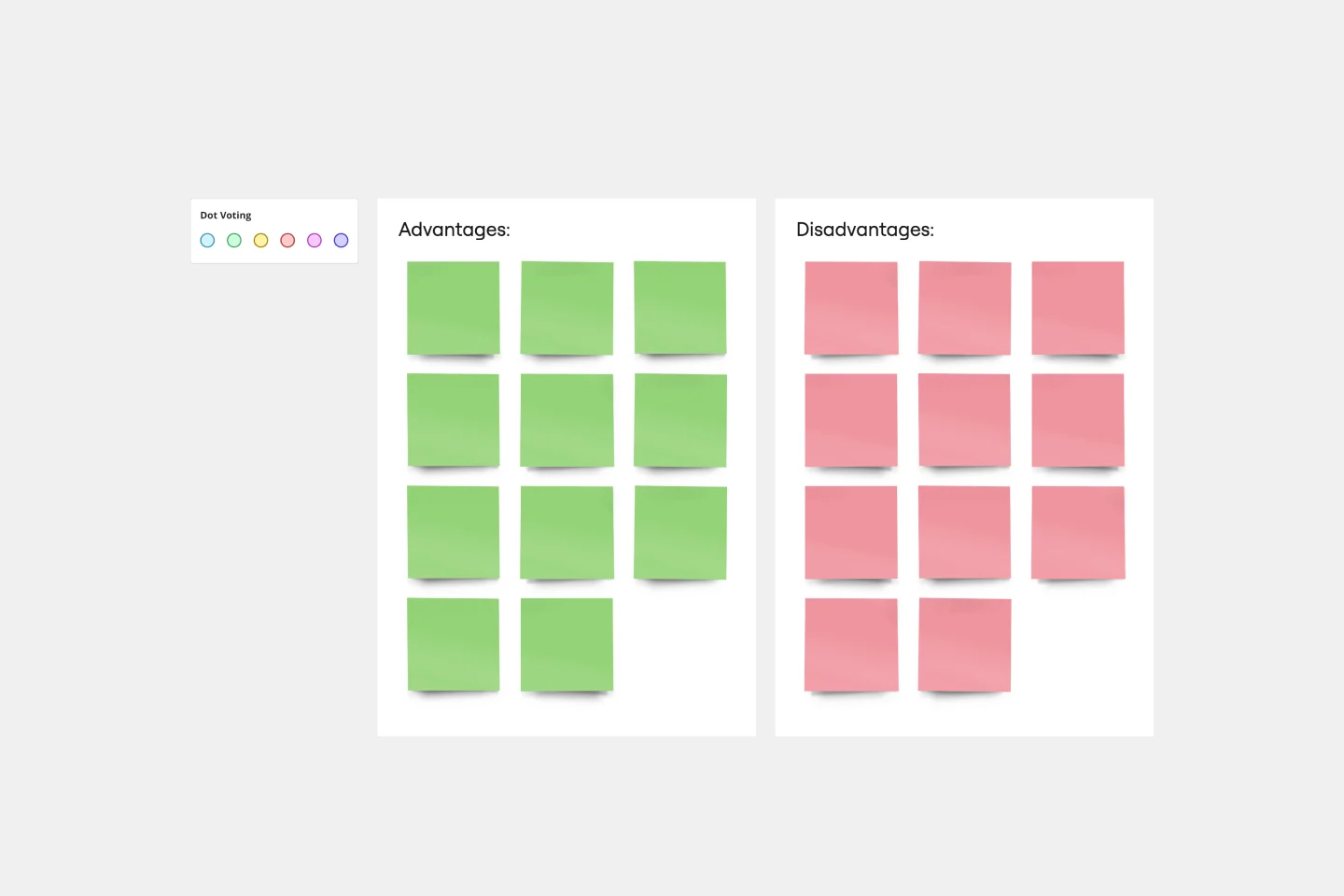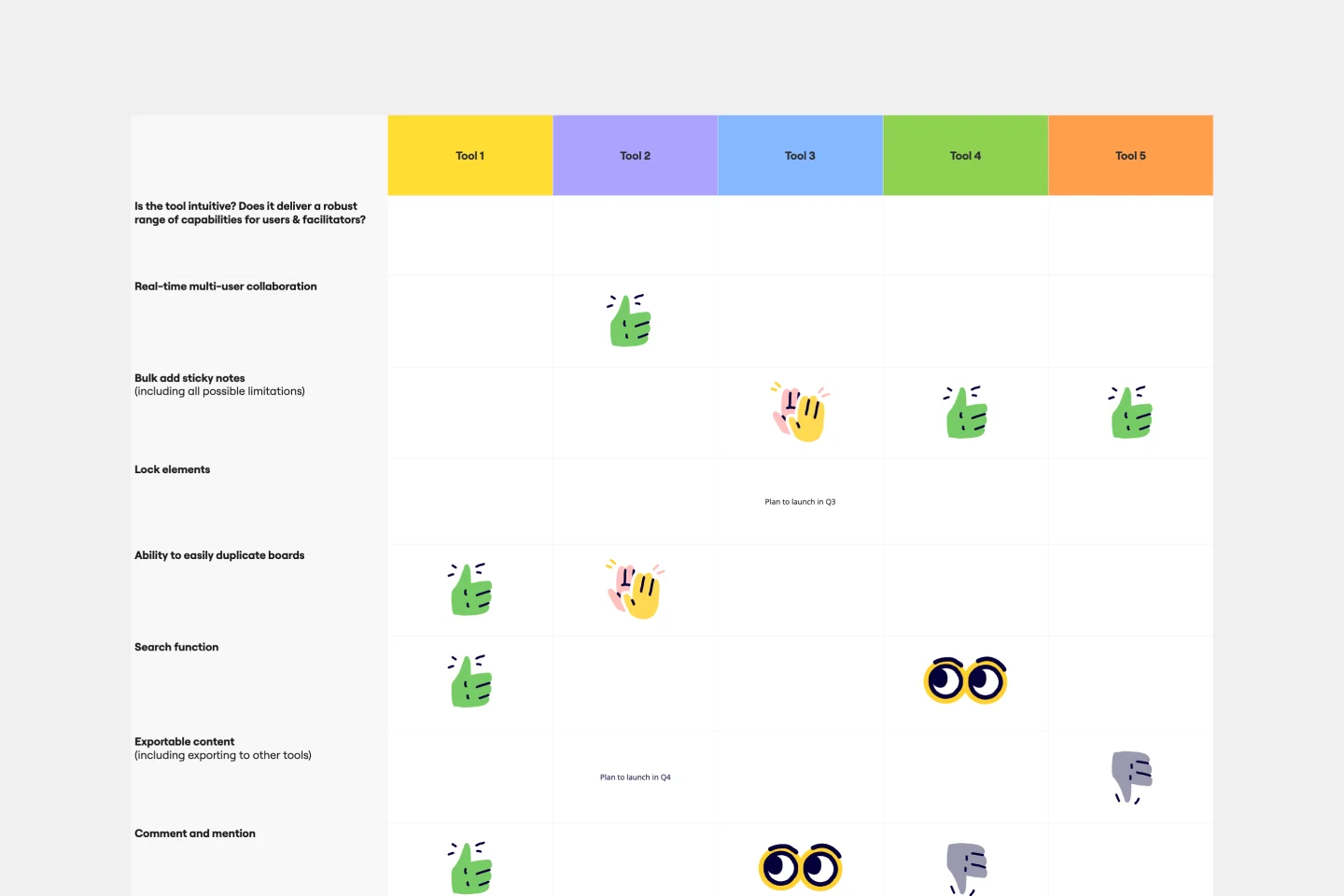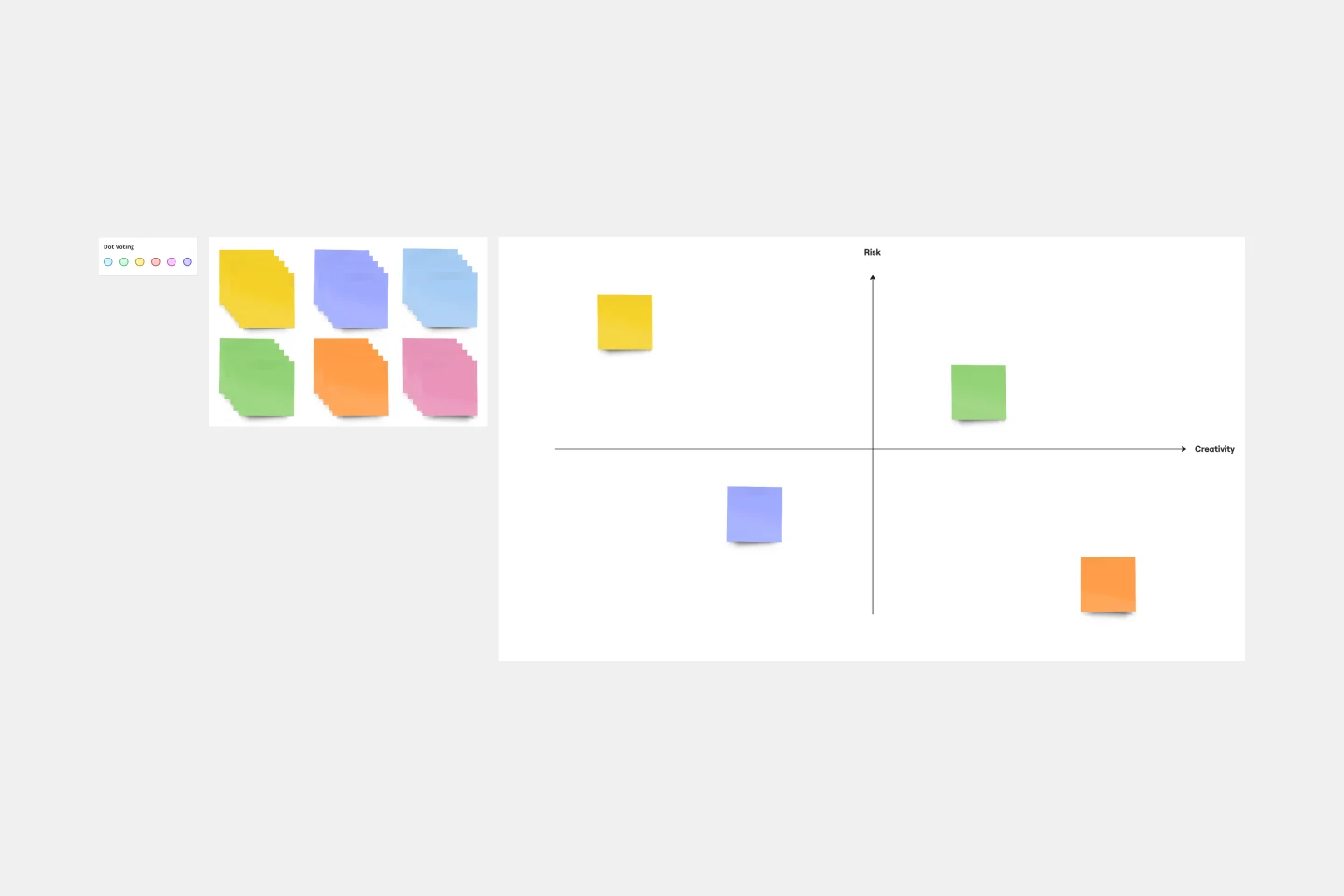About the Plus Delta Template
The Plus Delta Template is a retrospective framework for evaluating the success of a project, experience, or event. It allows you to gather feedback, determine success, and identify areas of improvement for the future.
What is the Plus Delta model?
The Plus Delta model is a simple but effective tool that focuses on how to improve a past event.
Events could be projects, meetings, planning sessions, performance reviews, or any other activity that requires reflection.
The model is split into two columns — Plus and Delta. On the appropriate side of the model, you’ll outline what went well and what you could change. From here, you can pinpoint key areas of improvement and figure out how to make the process better in the future.
The two factors of the Plus Delta Template
The template is split into two core areas — Plus and Delta. Analyzing these two areas makes it easier for teams to see what went well and what could be improved.
Here’s a breakdown of each column:
Plus
Under the “plus” heading, write down everything that’s going well. What tactics are proving to be successful? What strategies are working? What processes run smoothly? Reflect on recent wins, so you know what to repeat in future meetings and projects. You can also focus on how you overcame challenges throughout the event. For example, was there a hurdle you faced in the past that you conquered in this event? If so, make a note of it.
Delta
Under the “delta” heading, write down anything you want to change. What are some opportunities for improvement? How might the individual or the team be more effective? Is there a way to make a process more efficient? Note down ways to overcome these deltas that are actionable, specific, and measurable — like SMART goals.
Why should you use a Plus Delta Template?
It’s important to do regular project retrospectives for yourself and for your team, but it can be difficult to distill a year or a quarter’s worth of information into a single document. What did you do? What were your wins? What would you like to change? Trying to come up with a list on the fly can be overwhelming.
That’s why the Plus Delta Template is so powerful. It’s a simple way to reflect on what went well and how the process, project, or event can be changed for the better.
Let’s look at this (and a few other benefits) in more detail:
Showcase project success. The Plus Delta Template is a great way to showcase wins and learnings to your team, stakeholders, employees, and bosses. It’s easy to use and visually appealing, and you can customize it to suit your audience.
Simplify project analysis. Use the Plus Delta model to bring clarity to your reflection process. The simple template structure allows you to easily spot what went well and how to improve.
Encourage critical thinking. Encourage yourself and your team members to think critically about the successes and failures of your events with the Plus Delta Template.
Improve project work going forward. Use the template to visualize how you can improve your events going forward.
How to create a Plus Delta Template with Miro
Using Miro’s digital workspace, you can create the perfect Plus Delta Template for you and your team. It’s customizable and easy to use, and you can share it with your team.
Follow these steps to create the perfect Plus Delta framework for your business:
Step 1: Select this Plus Delta Template. Start by selecting this free Plus Delta Template. It’s intuitive and easy to use, so you’ll be able to start immediately.
Step 2: Review your project or event. Now, it’s time to start the reflection. Review your project or event in its entirety. You need this to be fresh in your mind so you can identify the wins and areas of improvement in the next step.
Step 3: Make a list of wins. In the Plus column, add the areas of your project that were successful. Think about strategies, tactics, behaviors, processes, and anything else that went well.
Step 4: Make a list of things you’d like to change. Under the Delta column, outline anything you think could be improved. It could be an improvement to an existing process or an entirely new process that’d make the entire project run more efficiently.
Step 5: Share the template with your team. When you’ve added all the relevant information, it’s time to share your work. Collaborate with your team to make sure you’ve covered everything. If they have any suggestions or feedback, they can add visual notes directly to your template.
Step 6: Create a plan of action. In the final phase, you’ll review all the information you’ve collected in the template. From here, you’ll create a plan of action with one of the action plan templates for how to improve your work going forward.
What is Plus Delta Debriefing?
A Plus Delta Debriefing is another way of saying that you’ll perform a Plus Delta analysis of your project. For example, you’d say, “Let’s do a Plus Delta Debriefing about our product launch process.” Then, the project team comes together to review the successes and challenges of the project.

Miro
Your virtual workspace for innovation
Miro is an innovation workspace designed for teams of every size, everywhere, to dream, design, and build the future together. Our mission? To empower these teams to create the next big thing, powered by AI at every step of the way. Over 90 million users around the world rely on Miro to untangle complex ideas, put customer needs first, and deliver products and services faster. All supported by best-in-class security, compliance, and scalability.
Categories
Similar templates
Yes No Flowchart Template

Yes No Flowchart Template
The Yes-No Flowchart Template is a simple and efficient tool that helps to simplify complex decision-making processes into clear and easy-to-follow steps. This template uses standard shapes to illustrate processes, decisions, and outcomes, with arrows that guide users from one action point to the next based on binary 'yes' or 'no' decisions. Its most prominent benefit is its ability to bring clarity to decision-making. By presenting processes visually, teams can effortlessly understand and navigate complex scenarios, ensuring that each step is transparent and reducing the potential for misunderstandings or missteps.
T-Chart Template

T-Chart Template
T-Charts can help you compare and contrast two different ideas, group information into different categories, and prove a change through “before” and “after” analysis. T-Charts are visual organizational tools that enable you to compare ideas, so you can evaluate pros and cons, facts and opinions, strengths and weaknesses, or big-picture views versus specific details. Designers and content creators can use T-Charts to turn possibilities into actionable ideas. T-Charts are useful for discussing differences and similarities with your team or clients and can help you to reach a decision together.
Comparison Chart Template

Comparison Chart Template
Eliminate wasted time and learn to make snap decisions both with your team and on your own. Comparison charts are perfect for collaboration, as they allow you to establish differences between ideas or products and get a full picture of the risks and benefits that come with them.
Assumption Grid Template

Assumption Grid Template
Someone wise once said that nothing in life is certain. But the waters of the business world? It can seem especially uncertain and unclear. An Assumption Grid can help you navigate those waters and make your decisions confidently. It organizes your business ideas according to the certainty and risk of each — then your team can discuss them and make judgment calls, prioritize, mitigate risk, and overcome uncertainties. That’s why an Assumption Grid is a powerful tool for getting past the decision paralysis that every team occasionally faces.
Yes No Flowchart Template

Yes No Flowchart Template
The Yes-No Flowchart Template is a simple and efficient tool that helps to simplify complex decision-making processes into clear and easy-to-follow steps. This template uses standard shapes to illustrate processes, decisions, and outcomes, with arrows that guide users from one action point to the next based on binary 'yes' or 'no' decisions. Its most prominent benefit is its ability to bring clarity to decision-making. By presenting processes visually, teams can effortlessly understand and navigate complex scenarios, ensuring that each step is transparent and reducing the potential for misunderstandings or missteps.
T-Chart Template

T-Chart Template
T-Charts can help you compare and contrast two different ideas, group information into different categories, and prove a change through “before” and “after” analysis. T-Charts are visual organizational tools that enable you to compare ideas, so you can evaluate pros and cons, facts and opinions, strengths and weaknesses, or big-picture views versus specific details. Designers and content creators can use T-Charts to turn possibilities into actionable ideas. T-Charts are useful for discussing differences and similarities with your team or clients and can help you to reach a decision together.
Comparison Chart Template

Comparison Chart Template
Eliminate wasted time and learn to make snap decisions both with your team and on your own. Comparison charts are perfect for collaboration, as they allow you to establish differences between ideas or products and get a full picture of the risks and benefits that come with them.
Assumption Grid Template

Assumption Grid Template
Someone wise once said that nothing in life is certain. But the waters of the business world? It can seem especially uncertain and unclear. An Assumption Grid can help you navigate those waters and make your decisions confidently. It organizes your business ideas according to the certainty and risk of each — then your team can discuss them and make judgment calls, prioritize, mitigate risk, and overcome uncertainties. That’s why an Assumption Grid is a powerful tool for getting past the decision paralysis that every team occasionally faces.